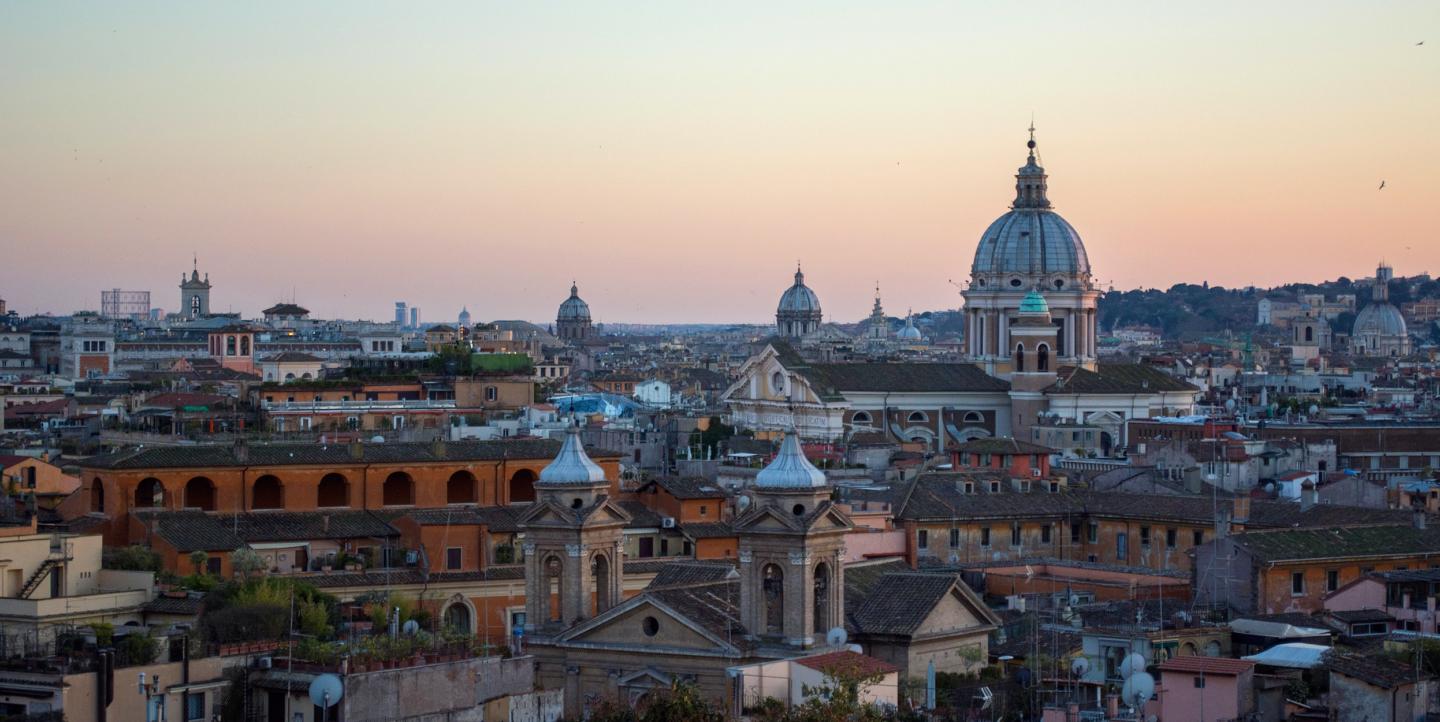The International Center for Journalists (ICFJ) is connecting journalists with health experts and newsroom leaders through a webinar series on COVID-19. The series is part of our ICFJ Global Health Crisis Reporting Forum — a project with our International Journalists’ Network (IJNet). Read more COVID-19 stories on IJNet here.
In Italy, COVID-19 has infected more than 333,940 people and claimed the lives of 36,061 people. In March, the country was the epicenter of the pandemic.
In response,the government implemented a stringent lockdown restricting the movement of its citizens. As the pandemic’s second wave hits the country, the government is considering extending the state of emergency until January 2021.
Two investigative journalists from Italy’s foremost investigative broadcast program, Report (RAI), received permission to travel regionally and report on COVID-19’s toll in the country. In an ICFJ webinar, these journalists, Cataldo Ciccolella and Lucina Paternesi, shared what they learned early on during their reporting on the crisis.
On safety measures
Ciccolella said he and his team only met with each other in person while wearing full protective gear. They would sanitize their equipment such as microphones, cameras and hard drives upon returning from the field.
With no public transportation operating, Paternesi spent many long days driving across the country in her personal vehicle. The team also made sure that they each had a private room they could immediately quarantine in if someone was infected.
[Read more: Combating COVID-19 in Germany: Key takeaways]
On covering the hard topics
They discovered that the management of patients was riddled with errors. One local hospital, they found, lied and said their sick patients were not actually infected with the virus.
Ciccolella and his team spoke with virologists to ensure they avoided any fact-based errors in their reporting. “The media has many enemies and we can’t afford to make any mistakes,” he said.
While on the road, Paternesi was pursuing stories in northern and central Italy, the country’s most populated regions. She conducted research on contact tracing, contacting partners around Europe to learn what governments were doing to protect citizens' privacy once a user has downloaded the Immuni app to their phone — an app used around the continent to track infections.
“Is it good for our governments to give so much power to big tech companies such as Google? Are they monopolizing our data? What kind of data are they collecting?” she asks. “For starters, in order for the app to work, we need to turn on our location.”
Ciccolella’s investigations took a different track, uncovering major shortcomings from the major health agencies responsible for protecting citizens such as the WHO and the Italian Health Ministry. For one, many countries had failed to update their pandemic prevention plan, which they were expected to do every three years. Such negligence meant that the warning signs of a global pandemic were ignored and vaccines were not restocked since 2006.
Italian officials sent erroneous information to the European Center for Disease Control, and said that they had updated the plan in 2010. One Italian WHO official publicly lied saying he updated the plan in 2016 when he was head of prevention at Italy’s Ministry of Health. Ciccolella discovered otherwise. Using Wayback — a site that archive’s the internet — Ciccolella discovered that not one sentence in the document had been updated since 2006.
If the pandemic prevention plan had been updated, Ciccolella said at least 10,000 lives could have been saved. The plan should have provided insight on the numbers of intensive care unit beds or doctors, and a plan for triage. But all of that information was missing.
“No one was really making sure it was updated or scolding them,” said Ciccolella. “From the WHO or other international authorities.
Furious at the finding, Italian officials threatened the RAI team with a lawsuit.
[Read more: Local journalists play a critical role during the pandemic]
On collaboration
For Ciccolella and his team, collaboration wasn’t a problem. They were used to staying in contact and dividing their attention between multiple stories at a time.
On editorial planning
As many investigative journalists know, stories take months to develop and content is planned in advance. However, by March, the audience’s attention had turned to only one topic: COVID-19.
Ciccolella and his team quickly turned their focus toward investigating pandemic-related issues. They kept tabs on major players like the World Health Organization, the Italian Ministry of Health and local hospitals.
He also advised reframing and repurposing stories with a COVID lens.
On chasing untold stories
Sometimes, sources will come to you with their stories. Paramedics and doctors connected with the RAI teams in huge numbers to let the reporters know what they were seeing on the frontlines, and what protocol they were told to follow. Many didn’t have access to personal protective equipment (PPE), while others were told early in the pandemic not to use PPE to avoid scaring the public.
Ciccolella’s team made use of public records to trace shipments of PPE coming from China. They discovered that the procurement contracts showed huge profit margins.
However, not everyone lives in a country with access to public information. Paternesi advised tracking down information at the regional or local level if it's not available at the national level.
“Look into the contradiction of the narrative of the government,” said Cicolella. He also suggested using social media to find interesting stories.
Tedi Doychinova is a program officer at the International Center for Journalists.
Main image CC-licensed by Unsplash via Julia Solonina.
This article was updated on October 14, 2020.

